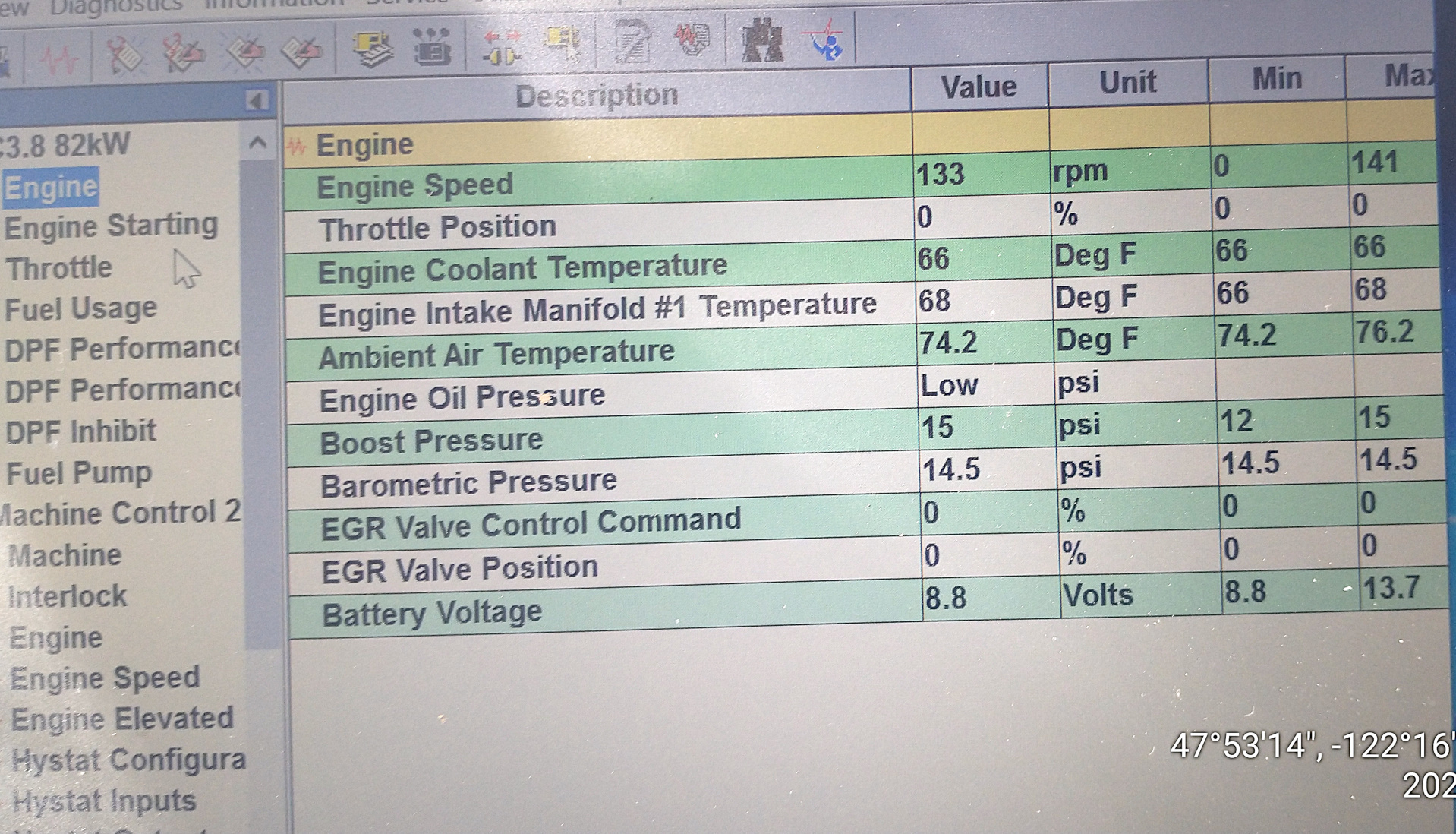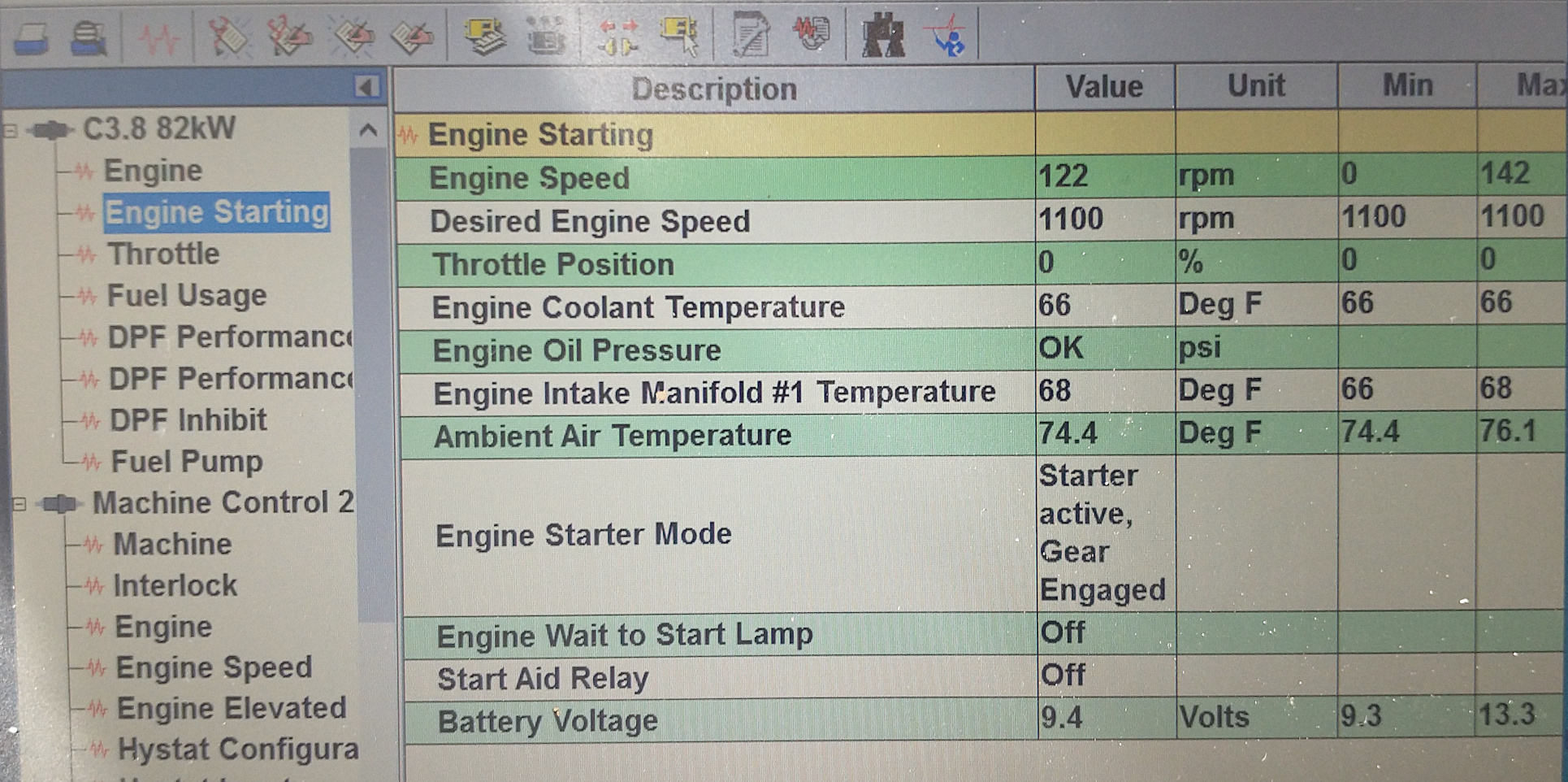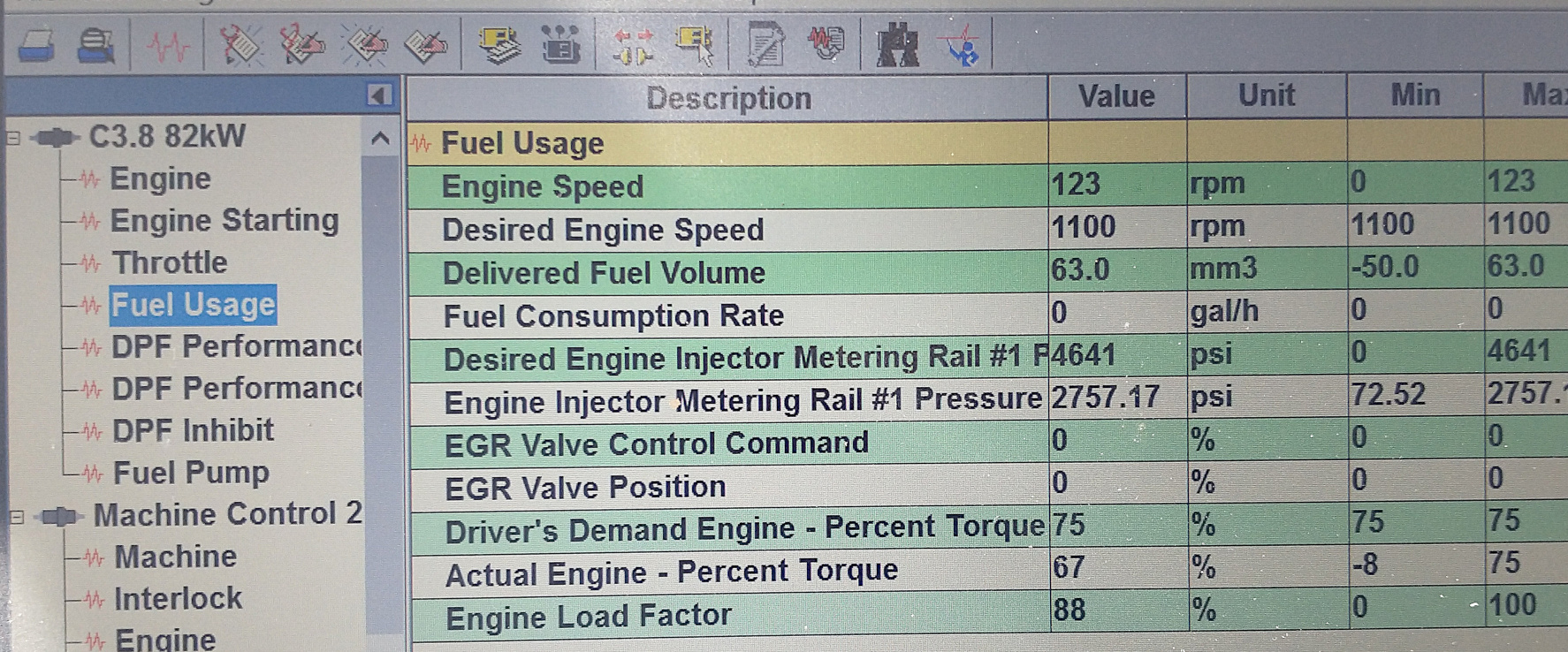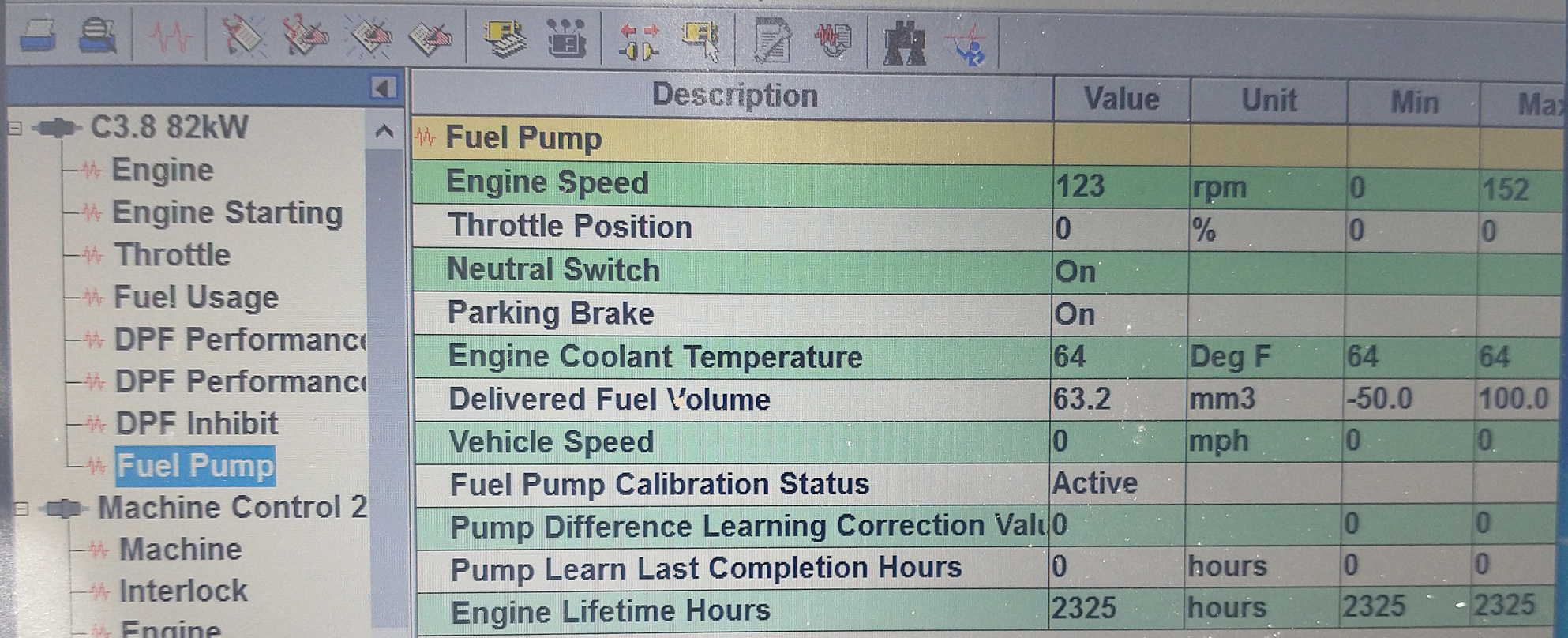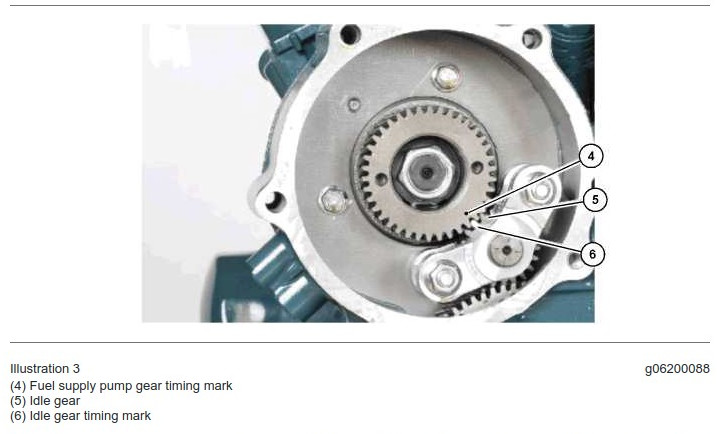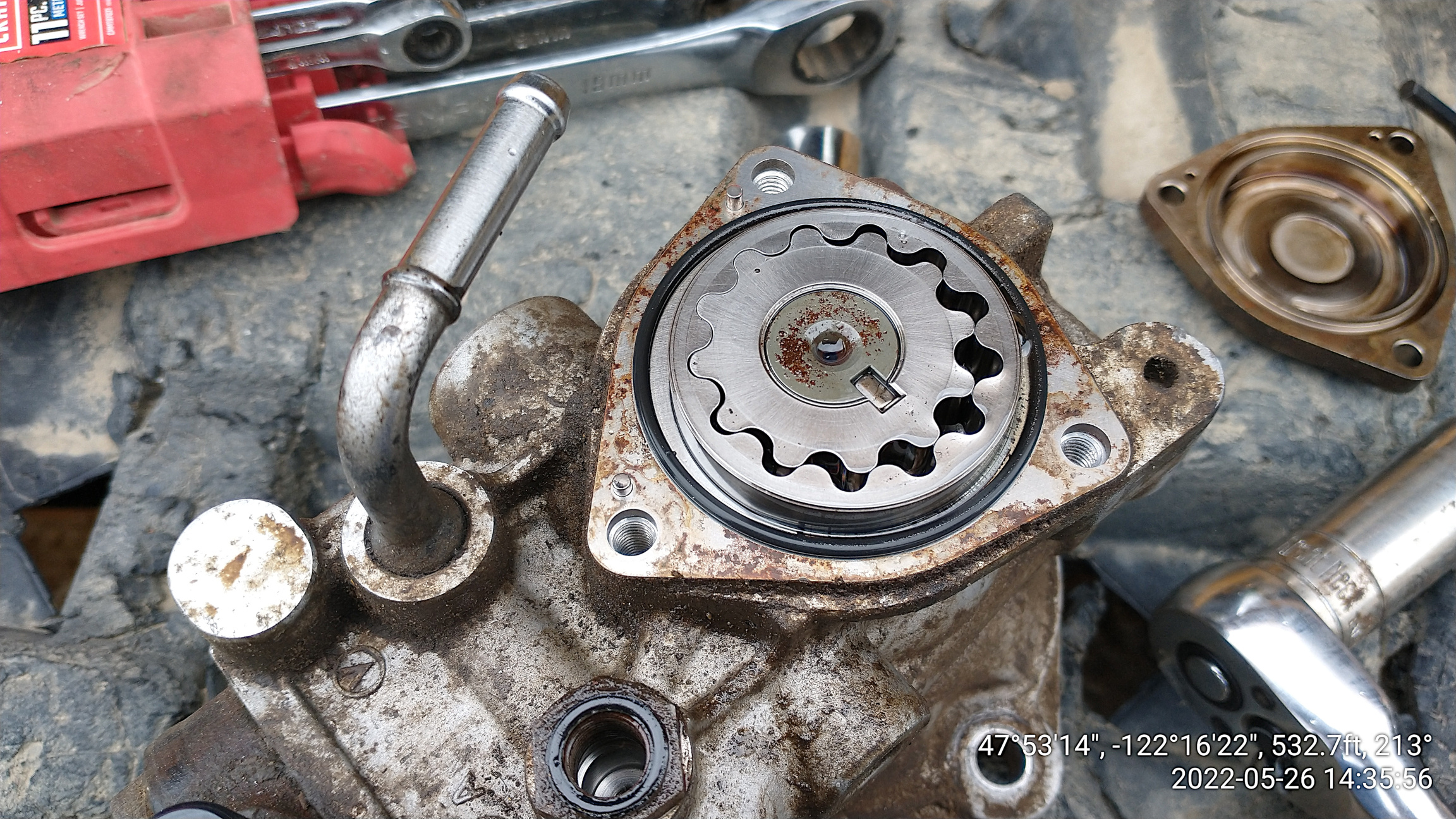Understand but I've read those instructions over and over and there is no 1TC mark on the big gear visible when the pump cover is off. That big gear is an idler off the crank gear, and it drives the pump idler and cam gear. Is that the flywheel?
My pump gear and idler look like this:
I removed its idler gear assembly and turned the crank CCW over and over but no such markings on the big idler gear. And there is no other cover on the front engine cover which might expose this symbol.
On the big idler there is one white marking which annotates two teeth, and another which annotates one tooth. I put an extra mark on one with a Sharpie but that went away when it got dipped in oil as I turned the crank.
Good to know that 1 & 4 compress at the same time, and there are definite points while turning which compress. But it's a 50-50 chance of being 1-4 or 2-3, seems like.
Seems like TDC ought to be annotated on the crank gear, not the big idler, but there doesn't seem to be a way to get at that other than pulling the whole front of the engine. It is a Kubota.
I took apart the HPFP but there sure wasn't much to take apart. I blew out all I could with brake parts cleaner and put it back together. I'd like to try it before I shell out $2,600 for another pump. Here's what the pre-pump gear looks like, quite good:
I have to suspect that the problem must be in its pressure regulator, but I took it apart as far as I could figure out and never found it.

